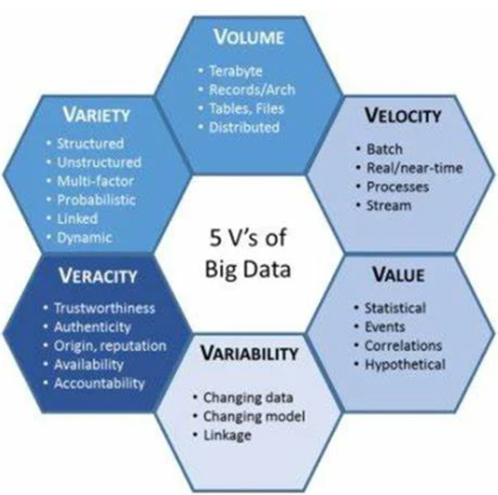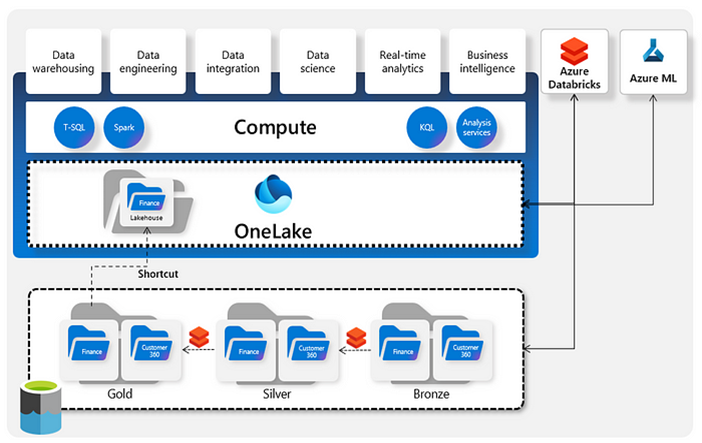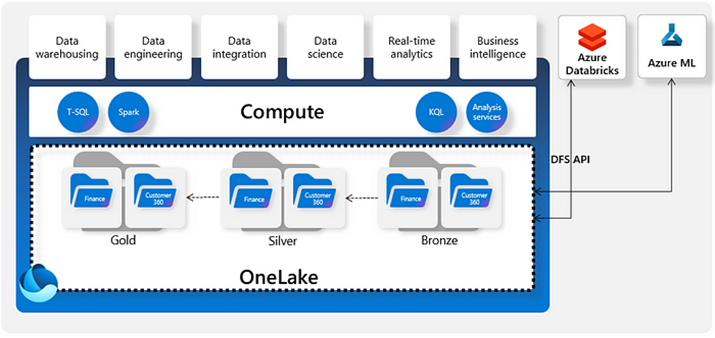Hatching Business Problems with Databricks and Microsoft Fabric
In today’s fast-paced digital landscape, data reigns supreme. Businesses face many challenges, ranging from data management complexities to the need for real-time insights for decision-making. To tackle these hurdles efficiently, organizations are increasingly turning towards innovative technologies like Databricks and Microsoft Fabric. Together, these powerful platforms form a dynamic duo, providing businesses with the tools to address their most pressing problems.
Databricks
Unraveling complexities
Databricks is a unified analytics platform simplifying data processing and machine learning tasks. Built on top of Apache Spark, it offers scalable processing power coupled with intuitive interfaces for data scientists, analysts, and engineers. Databricks enables businesses to seamlessly ingest, process, and analyze vast volumes of data from diverse sources, empowering them to derive actionable insights quickly.
The data conundrum: challenges faced by businesses
Businesses encounter a multitude of data-related challenges that hinder their growth and competitiveness:
- Data silos: Disparate systems and departments scatter information, making it difficult to access and analyze data holistically. This leads to inefficiencies and missed opportunities.
- Scalability issues: Legacy data processing systems struggle to handle the ever-increasing volume, variety, and velocity of data generated by modern businesses. This limits scalability and agility, which are often summarized by the 5 Vs of big data.

Fig.1 The five V’s of big data. Source – https://www.researchgate.net/figure/The-five-Vs-of-Big-Data-Adapted-from-IBM-big-data-platform-Bringing-big-data-to-the_fig1_281404634
- Complexity in analysis: Extracting meaningful insights from complex, unstructured data requires advanced analytics capabilities and expertise, which many organizations lack.
Key features of Databricks
Databricks is a unified analytics platform built on Apache Spark designed to address the data challenges modern businesses face. It provides a collaborative environment that enables organizations to streamline data management, accelerate analytics, and drive actionable insights.
- Unified data analytics: Databricks combines data engineering, data science, and business analytics in one collaborative environment, encouraging cross-functional collaboration and streamlining workflows.
- Scalability: Leveraging Apache Spark’s distributed computing capabilities, Databricks can effortlessly handle petabytes of data, ensuring businesses can scale their analytics infrastructure as their data grows.
- Advanced analytics: Databricks provides robust support for building and deploying machine learning models at scale, enabling businesses to leverage the power of AI for predictive analytics, anomaly detection, and more. This enables organizations to derive actionable insights from their data, driving informed decision-making and strategic initiatives.
Microsoft Fabric
Understanding the terrain
Microsoft Fabric, formerly known as Azure Synapse Analytics, is a cloud-based analytics service that facilitates seamless data integration, warehousing, and analytics. It empowers organizations to break down data silos, enabling them to gain holistic insights from their disparate data sources.
The data landscape: challenges faced by businesses
Businesses encounter a myriad of data-related challenges that impede their progress and hinder their ability to derive actionable insights:
- Data fragmentation: Information is often scattered across disparate systems and sources, leading to data silos that hinder collaboration and decision-making.
- Complexity in analysis: Extracting meaningful insights from vast volumes of data requires advanced analytics capabilities and expertise, posing a challenge for many organizations.
- Scalability issues: Traditional data processing systems struggle to handle the exponential growth of data generated by modern businesses, limiting scalability and agility.
Key features of Microsoft Fabric
Microsoft Fabric is a cloud-based analytics service providing organizations with the tools and capabilities to streamline data integration, warehousing, and analytics. It enables businesses to break down data silos, derive holistic insights from disparate data sources, and drive informed decision-making.
- Unified analytics platform: Microsoft Fabric offers a unified experience for data engineers, data scientists, and business analysts, providing them the tools to collaborate effectively and derive insights from data.
- Data integration: Fabric simplifies the process of ingesting data from various sources, including relational databases, data lakes, and streaming sources, allowing businesses to consolidate their data for analysis.
- On-demand querying: With Microsoft Fabric, businesses can execute ad-hoc queries on large volumes of data in real-time, enabling interactive analytics and faster decision-making.
The convergence: tackling business challenges together
Individually, Databricks and Microsoft Fabric offer powerful data management and analytics capabilities. However, their integration unlocks their full potential, allowing businesses to tackle various challenges with agility and efficiency.
Use cases:
- Real-time analytics: By combining Databricks’ real-time processing capabilities with Microsoft Fabric’s on-demand querying, businesses can gain immediate insights into their operations, enabling them to detect trends, identify anomalies, and respond swiftly to changing market conditions.
- Predictive maintenance: Leveraging Databricks’ machine learning capabilities and Microsoft Fabric’s data integration features, organizations can build predictive maintenance models that analyze real-time equipment sensor data. This helps them anticipate and prevent equipment failures before they occur.
- Customer segmentation: Databricks’ advanced analytics and Microsoft Fabric’s unified data platform allow businesses to analyze in-depth customer segmentation, enabling targeted marketing campaigns and personalized customer experiences.
- Data governance and compliance: Using Databricks’ comprehensive security features and Microsoft Fabric’s data governance capabilities, businesses can ensure compliance with regulatory requirements and protect sensitive data from unauthorized access or misuse.
Conclusion: a path forward
In the constantly changing world of business, technologies like Databricks and Microsoft Fabric are invaluable allies. They give organizations the tools to handle complexity, discover insights, and drive innovation. By combining the strengths of these platforms, businesses can confidently move forward, turning data into a strategic asset that drives growth and success in the digital age.
References:
Can Microsoft Fabric complement your Databricks platform? Daniel Jimenez Garcia, Aug 2, 2023: https://medium.com/@danieljimgarcia/can-microsoft-fabric-complement-your-databricks-data-platform-7afa6b873737
Questions in mind
- Should I migrate my data platform to Databricks/Microsoft Fabric?
Ans: It depends on your current architecture. If you are using legacy architecture (Hadoop, Hive, etc.) with data science-related stuff, then it is advisable to migrate to Databricks. If no such volume, variety, and velocity have been handled and the only purpose is to track information in a Power BI report, then you can migrate to Microsoft Fabric.
- Should I migrate from Databricks to Microsoft Fabric?
Ans: If your project heavily relies on Databricks Notebook, Delta Lake, and Lakehouse Architecture, the answer is NO.
- Which is more mature than the other?
Ans: Databricks is more mature than Microsoft Fabric.
- Why should I choose Databricks?
Ans: Databricks is cloud agnostic, allowing you to move to any cloud provider you prefer. In contrast, Microsoft Fabric is not cloud agnostic. This flexibility makes Databricks a more versatile choice for organizations seeking to maintain control over their cloud infrastructure options.
- Can I use both Databricks and Microsoft Fabric?
Ans: Yes, you can use both Databricks and Microsoft Fabric together.
- How can I integrate Microsoft Fabric with Delta Lake?
Ans: Fabric provides a shortcut feature that allows you to access Delta Lake in a separate ADLS account as if it were stored within Fabric’s Onelake.
Fig. 2 Fabric shortcuts to Delta Tables in ADLS Gen2. Source: https://medium.com/@danieljimgarcia/can-microsoft-fabric-complement-your-databricks-data-platform-7afa6b873737
- Can Databricks read and write data in Fabric’s OneLake?
Ans: Yes. Databricks can read and write data in Fabric’s OneLake.
Fig. 3 Databricks directly reading/writing to Fabric’s OneLake. Source:https://medium.com/@danieljimgarcia/can-microsoft-fabric-complement-your-databricks-data-platform-7afa6b873737
Latest Blogs
A closer look at Kimi K2 Thinking, an open agentic model that pushes autonomy, security, and…
We live in an era where data drives every strategic shift, fuels every decision, and informs…
The Evolution of Third-Party Risk: When Trust Meets Technology Not long ago, third-party risk…
Today, media and entertainment are changing quickly. The combination of artificial intelligence,…




